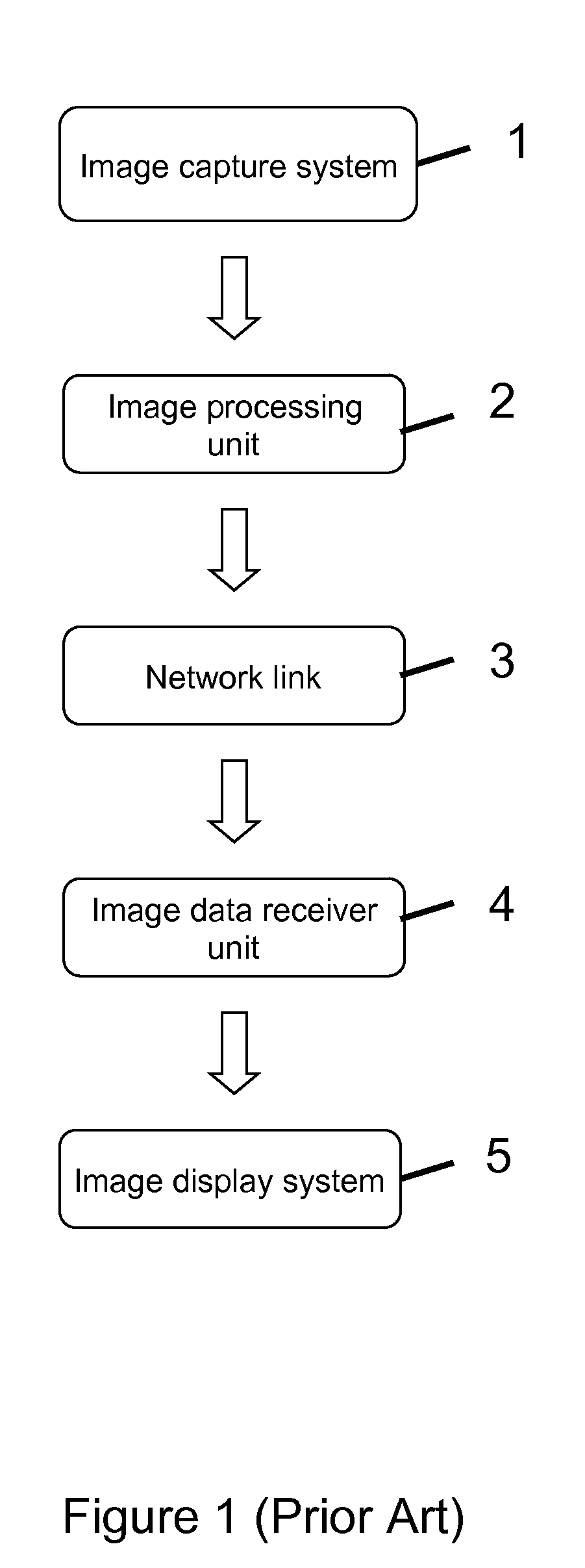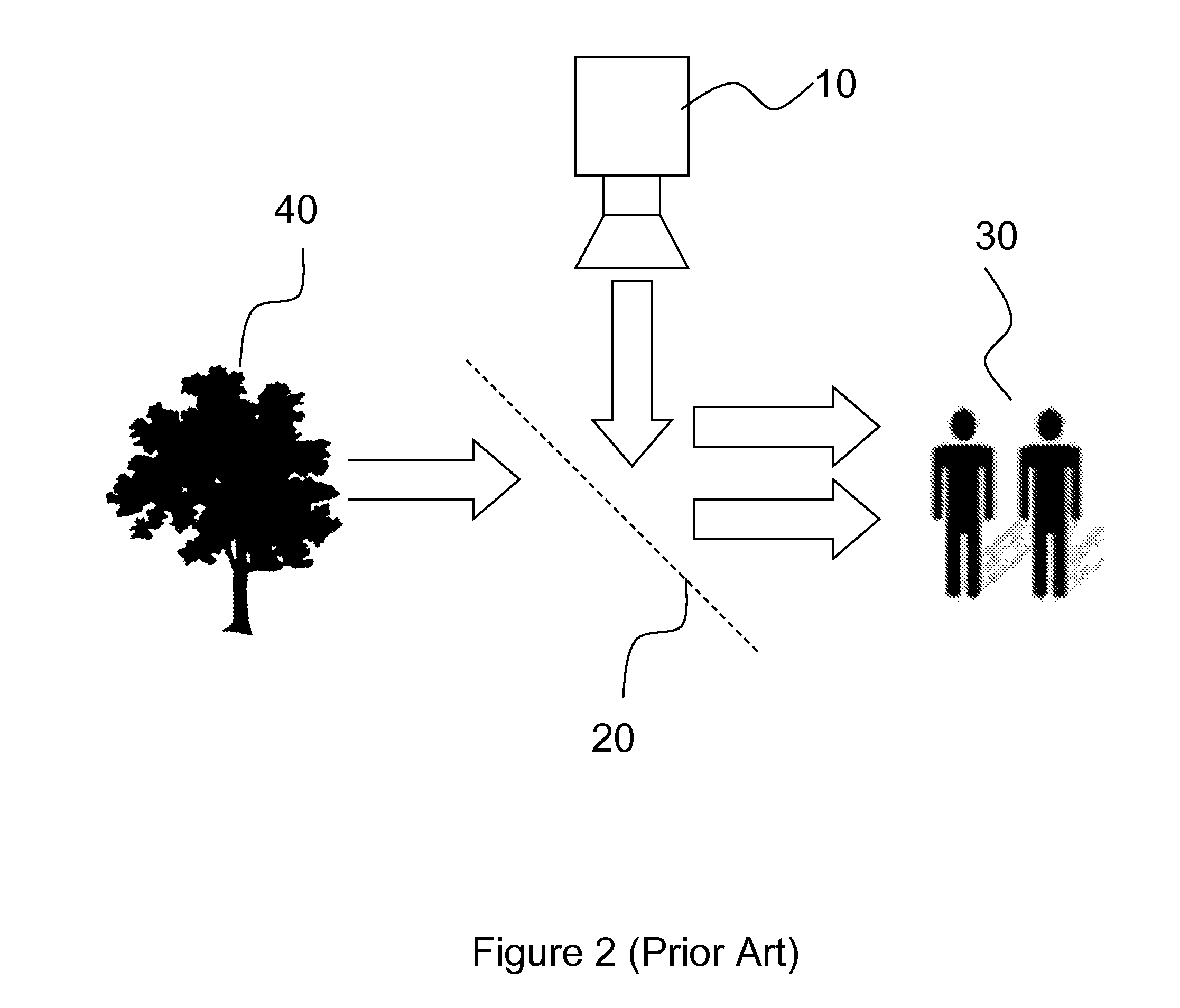Auto Stereoscopic 3D Telepresence Using Integral Holography
a technology of integral holography and stereoscopic video, which is applied in the field of 3d telepresence systems and methods, can solve the problems that the viewer cannot explore different perspectives of the scene, the standard video conferencing does not try to produce illusions, and the musion eyeliner® system cannot reproduce perspective or parallax, etc., to achieve the effect of increasing the brightness of the hologram, improving the diffraction efficiency of the holographic material, and improving throughpu
- Summary
- Abstract
- Description
- Claims
- Application Information
AI Technical Summary
Benefits of technology
Problems solved by technology
Method used
Image
Examples
Embodiment Construction
[0050]The present invention describes a holographic direct-view display system using a holographic integral imaging technique that is an auto stereoscopic way to reproduce parallax and occlusion. The display is not resolution limited and is scalable to display life size images if desired. The system can be used to transmit 3D depictions of a scene at video and sub-video rates as well as other information, such as images of documents or computer generated images. The images may be captured, transmitted and displayed in real-time (or near real-time) for telepresence or stored for time-shifted display. The system combines integral holography, a pulsed laser to record the hologram at high speed and a dynamic refreshable holographic material such as a photorefractive polymer as a recording media. The system uses techniques to write, read and erase the updateable hologram that allow the holographic material, hence direct-view display to remain stationary throughout each of the processes f...
PUM
 Login to View More
Login to View More Abstract
Description
Claims
Application Information
 Login to View More
Login to View More - R&D
- Intellectual Property
- Life Sciences
- Materials
- Tech Scout
- Unparalleled Data Quality
- Higher Quality Content
- 60% Fewer Hallucinations
Browse by: Latest US Patents, China's latest patents, Technical Efficacy Thesaurus, Application Domain, Technology Topic, Popular Technical Reports.
© 2025 PatSnap. All rights reserved.Legal|Privacy policy|Modern Slavery Act Transparency Statement|Sitemap|About US| Contact US: help@patsnap.com



